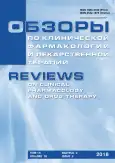Asymmetry of reinforcing properties of the lateral hypothalamus in the self-stimulation test
- Authors: Efimov N.S.1, Bessolova Y.N.1, Karpova I.V.1, Lebedev A.A.1, Shabanov P.D.1
-
Affiliations:
- Institute of Experimental Medicine
- Issue: Vol 16, No 2 (2018)
- Pages: 37-41
- Section: Articles
- URL: https://journal-vniispk.ru/RCF/article/view/9163
- DOI: https://doi.org/10.17816/RCF16237-41
- ID: 9163
Cite item
Full Text
Abstract
In the protocols of modern pharmacological studies of a self-stimulation reaction in rodents, stimulating electrodes are implanted as a rule unilaterally. The reinforcing properties of the left and right hypothalamus were suggested to be identical.
The aim of the study was to clear up if the possibilities of the left and right hypothalamus to produce self-stimulation are similar or not.
Methods. The study was carried out on adult male Wistar rats. The electrodes were implanted into the lateral hypothalamus bilaterally. The rats, in which an approach reaction was observed, learned self-stimulation in the Skinner box with stimulation of the left or right hypothalamus as a reinforcing agent descending thresholds of stimulation up to minimal one.
Results. Self-stimulation of the left hypothalamus gave an approach reaction in the majority of rats (81.8%), self-stimulation reaction was developed in 72.7% of rats. Only 46.2% rats reacted on stimulation of the right hypothalamus, self-stimulation reaction was developed in 30.8% of rats. The thresholds of positive and negative reactions registered after electrical stimulation of both sides of hypothalamus were significantly differed (H(3, N = 31) = 14,92; p = 0,002). And these changes were not connected with lateralization but with sign of reaction: in general the thresholds of approach reaction were higher than thresholds of avoidance.
Conclusion. In the paper, the fact of different possibility of approach reaction and self-stimulation development as a result of electrical stimulation of the left and right hypothalamus in rats has been described. After stimulation of the left hypothalamus, a possibility to receive positive reaction and to form self-stimulation on its basis is higher than after stimulation of the right hypothalamus.
Keywords
Full Text
##article.viewOnOriginalSite##About the authors
Nikolay S. Efimov
Institute of Experimental Medicine
Author for correspondence.
Email: bychkov@mail.ru
Postgraduate student, S.V. Anichkov Department of Neuropharmacology
Russian Federation, St. PeresburgYulia N. Bessolova
Institute of Experimental Medicine
Email: bychkov@mail.ru
Postgraduate student, S.V. Anichkov Department of Neuropharmacology
Russian Federation, St. PeresburgInessa V. Karpova
Institute of Experimental Medicine
Email: inessa.karpova@gmail.com
PhD (Physiology), Senior Researcher, S.V. Anichkov Department of Neuropharmacology
Russian Federation, St. PeresburgAndrei A. Lebedev
Institute of Experimental Medicine
Email: aalebedev-iem@rambler.ru
Dr. Biol. Sci. (Pharmacology), Leading Researcher, S.V. Anichkov Department of Neuropharmacology
Russian Federation, St. PeresburgPetr D. Shabanov
Institute of Experimental Medicine
Email: pdshabanov@mail.ru
Dr. Med. Sci., Professor, Head, S.V. Anichkov Department of Neuropharmacology
Russian Federation, St. PeresburgReferences
- Волков И.В., Александров В.И., Павлова И.В. Сопоставление эффективности раздражения правого и левого латерального гипоталамуса при реакции самостимуляции // Журнал высшей нервной деятельности им. И.П. Павлова. - 2000. - Т. 50. - № 1. - С. 133-136. [Volkov IV, Aleksandrov VI, Pavlova IV. Comparison of the efficiency of the right and left lateral hypothalamic stimulation under the self-stimulation conditions. Zh Vyssh Nerv Deiat Im I P Pavlova. 2000;50(1):133-136. (In Russ.)]
- Дробленков А.В. Краткий микроскопический атлас ядерных и корковых центров мезокортиколимбической и некоторых других дофаминергических систем головного мозга крысы / Под ред. Н.Р. Карелиной. - СПб.: СПбГПМА, 2006. [Droblenkov AV. Kratkiy mikroskopicheskiy atlas yadernykh i korkovykh tsentrov mezokortikolimbicheskoy i nekotorykh drugikh dofaminergicheskikh sistem golovnogo mozga krysy. Ed by N.R. Karelina. Saint Petersburg: SPbGPMA; 2006. (In Russ.)]
- Лебедев А.А., Шабанов П.Д. Сопоставление реакции самостимуляции и условного предпочтения места при введении фенамина у крыс // Журнал высшей нервной деятельности им. И.П. Павлова. - 1992. - Т. 42. - № 4. - С. 692-698. [Lebedev AA, Shabanov PD. Sopostavlenie reaktsii samostimulyatsii i uslovnogo predpochteniya mesta pri vvedenii fenamina u krys. Zh Vyssh Nerv Deiat Im I P Pavlova. 1992;42(4):692-698. (In Russ.)]
- Михеев В.В., Шабанов П.Д. Фармакологическая асимметрия мозга. - СПб.: Элби-СПб, 2007. [Mikheev VV, Shabanov PD. Farmakologicheskaya asimmetriya mozga. Saint Petersburg: Elbi-SPb; 2007. (In Russ.)]
- Barbano MF, Wang HL, Morales M, Wise RA. Feeding and Reward Are Differentially Induced by Activating GABAergic Lateral Hypothalamic Projections to VTA. J Neurosci. 2016;36(10):2975-2985. doi: 10.1523/JNEUROSCI.3799-15.2016.
- Fish EW, Robinson JE, Krouse MC, et al. Intracranial self-stimulation in FAST and SLOW mice: effects of alcohol and cocaine. Psychopharmacology (Berl). 2012;220(4):719-30. doi: 10.1007/s00213-011-2523-x.
- König KP, Klippel AA. A stereotaxic atlas of the forebrain and lower parts of the brain stem. Baltimore; 1963.
- Lazenka MF, Legakis LP, Negus SS. Opposing effects of dopamine D1- and D2-like agonists on intracranial self-stimulation in male rats. Exp Clin Psychopharmacol. 2016;24(3):193-205. doi: 10.1037/pha0000067.
- Negus SS, Miller LL. Intracranial self-stimulation to evaluate abuse potential of drugs. Pharmacol Rev. 2014;66(3):869-917. doi: 10.1124/pr.112.007419.
- Olds J. A preliminary mapping of electrical reinforcing effects in the rat brain. J Comp Physiol Psychol. 1956;49(3):281-285. doi: 10.1037/h0041287.
- Ranck JB. Which elements are excited in electrical stimulation of mammalian central nervous system: A review. Brain Res. 1975;98(3):417-440. doi: 10.1016/0006-8993(75) 90364-9.






